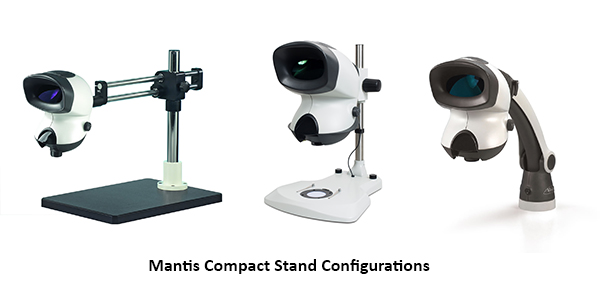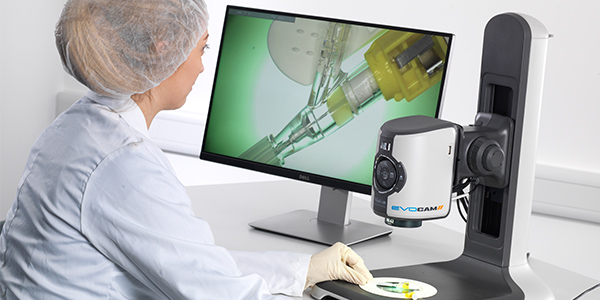A stereo microscope is the preferred tool of choice for an extremely varied range of general and precision magnification tasks, typically in the 2x – 100x magnification range, but could be required for use up to 300x. With such a varied potential workload, it is critically important to choose the one to fit your actual needs.
Our buying guide breaks down the important factors to consider when choosing a stereo microscope:
Application
Typically, this is what the user needs to do. Different microscopes may be better suited for some tasks than others, which can differ across applications in electronics, precision metal, plastics, ceramics, rubber engineering, medical and dental device manufacturing, aerospace, automotive engineering, biomedical laboratories, horticultural work in agriculture, jewellery and restoration, and even hair transplants. The application defines what the microscope must do to allow the user to do their job and will affect magnification, zoom, 3D view and more.
User(s)
Not only must you consider how the microscope will be used, but also how many people will use it. This could also dictate the number of units required, and also for how long each will be used for. Frequent and long-duration users will be more exposed and more sensitive to the ergonomic effects of using a microscope.
Budget and Other Special Requirements
Effective and useful equipment is a good investment, and one should also consider future needs. Some microscopes offer modularity for future upgrades, so making a wise investment early on can be more cost effective in the longer term.
Magnification and FOV
Having the right tool for the job is never more important than in precision work. The right microscope is one that offers a useful range of magnification. Stereo microscopes offer varying magnification range, from 2x to 300x. As power increases, so too does the microscope’s specialisation. Some applications require a greater field of view, particularly if the subject must be manipulated while under magnification.
Illumination
All stereo microscopy requires light. While varying illumination techniques exist, most stereo microscopes rely on reflected light. A few subjects may benefit from UV illumination, while still others (particularly those that are translucent) may require transmitted light from a bench stand setup. Many microscopes can benefit from ring, and other illuminators as add-on accessories, depending upon application.
Working Environment
The microscope’s purpose will dictate the type of stand or mount you need, but be aware that the stand and its table positioning will also affect users’ comfort.

A bench stand offers a small footprint and is configured so that the user can add transmitted backlight for subjects that require it, such as biological specimens. Boom stands are widely used in industrial applications, allowing users to mount the microscope directly to a desk or large workstation. An articulated arm mount suits environments where users may need to occasionally swing the microscope away from the workspace. Universal stands often combine various benefits of all these stand types.
Digital Imaging and Viewing Options

Your microscopy may only involve simple observation and inspection. Increasingly, though, modern applications involve still image or video capture, as well as live digital viewing displayed on monitors.
Some microscopes include accessories that allow you to attach a camera and then take still images or capture video, while others are pre-equipped with integrated cameras. Benefits and applications include documentation of the subject or perhaps sharing results with others. Regardless of whether the camera is an accessory or built-in, capture and live viewing typically require a computer.
Stereo Viewing Variations
You’ll find stereo microscopes in a variety of magnifications, configurations, and accessories. All offer similar functionality, but they differ greatly in the value they provide within various applications.
The conventional stereoscopic microscope features eyepieces with a 3.5mm exit pupil, the tiny, circular area of light that the microscope presents to users’ eyes. In order to properly see the subject, users must precisely align their eyes with the eyepieces. Not only is this tricky, but the user is forced to maintain a fixed body posture, potentially causing physical discomfort, fatigue, and loss of performance.
The Vision Engineering Dynascope design does away with traditional dual-eyepieces while retaining the stereoscopic view. Eyepiece-less versions offer a substantially larger exit pupil, up to 30mm, allowing the user to move up and down and from side to side for comfort without compromising the view. This also makes for easier hands-free operation in applications, such as soldering or layer removal, where frequent subject manipulation is needed. With the eyepiece-less design, users do not need to remove prescription glasses and safety glasses, as they do not need to have their eyes up against the eyepieces.
Contact the Experts for Guidance
Balancing application, operator requirements, and budget will help you make the best possible choice and keep workers happier, healthier and more productive. If you’d like to discuss your requirements contact us



